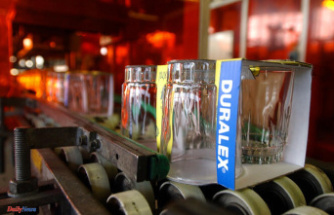Your vehicle’s braking system is critical to keeping you safe on the road. Its brake pads perform an important job – pressing against the rotors to bring the wheels to a complete stop. Brake pads are designed to withstand high friction and temperatures, but they do eventually wear out. Depending on your driving habits, you should swap them out every 35,000 to 50,000 miles. You probably also notice some telltale signs – vibration or grinding during braking, longer stopping times and squealing. It’s also wise to replace your pads if they’re less than ¼ inch thick.
Most brake pad sets are sold by the axle – which means you’re buying pads for either both front or both rear wheels at once. And since many vehicles typically use two pads on each wheel’s rotor, a full set for each axle contains four pads. Around 70% of your vehicle’s stopping power comes from the front brakes, so you’d replace the front pads more often than the rears. But you do need to swap both sets of pads on each axle at the same time.
Do's & Don'ts When Changing Brake Pads
Replacing your brake pads sounds pretty straightforward, right? Well, mostly. Wise DIYers observe some smart practices when performing this type of work:
- Use a jack stand. Don’t rely on a standard hydraulic jack to keep the vehicle lifted.
- Check your pads’ packaging for correct installation.
- Make sure to install your pads facing the rotors – not away from them.
- After installing the pads, pump your brake pedal before test driving the vehicle.
How To Choose the Right Brake Pads
Correct installation is one thing. But you also need to select the best brake pads for the job. Your driving habits are key in choosing brake pads for your vehicle. You’ll typically find five different types of pads on the market:
- Organic
- Semi-metallic
- Heavy-duty semi-metallic
- Ceramic
- Carbon ceramic
Organic pads tend to generate less noise and dust than other kinds. They don’t last as long, so they’re best on lightweight vehicles and shorter trips. Semi-metallic and heavy-duty semi-metallic can take more heat and friction, so they work well for commuter vehicles and daily driving. Ceramic and carbon-ceramic pads generate less noise, less dust and last longer than the semi-metallic versions. They’re capable of handling even more heat and friction, so they’re ideal for performance driving and racing.
High-Quality Affordable Brake Pads
You may wonder, “How much should it cost to replace brake pads and rotors?” If you’re only replacing pads, you’d probably pay anywhere between $15 and $80 for a set of four. Of course, you’ll spend a little more if you choose ceramic or carbon-ceramic pads. You don’t need to swap out rotors each time you change the pads, but you may need to replace them if they’re worn. For a brand-new rotor, you can expect to pay between $35 and $180.
Smart shoppers want to balance quality and value. Fortunately, you needn’t settle for cut-rate parts to save money. Aftermarket parts can give you dependable performance at a lower price. Bargain hunters may want to try AutoZone coupons for even bigger savings.












